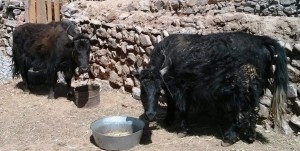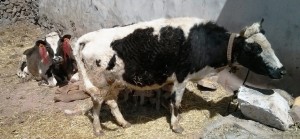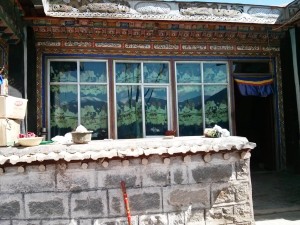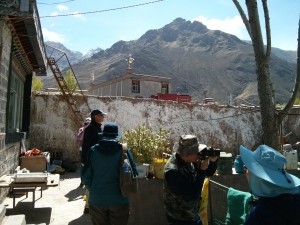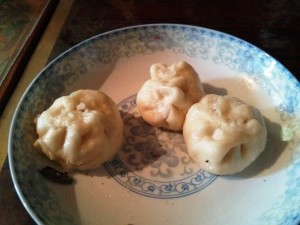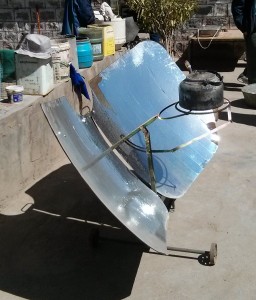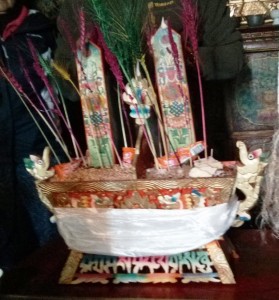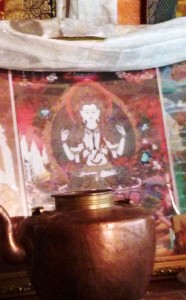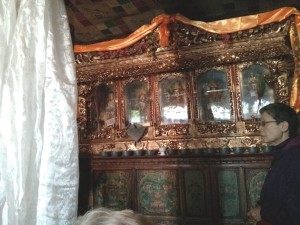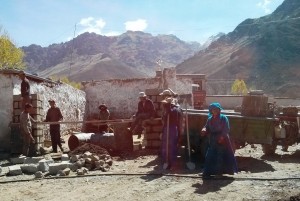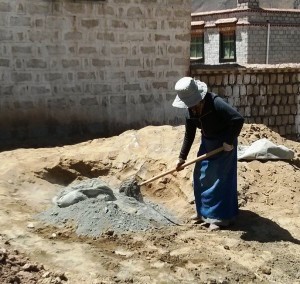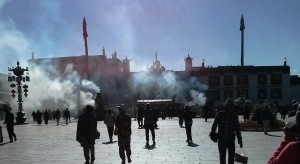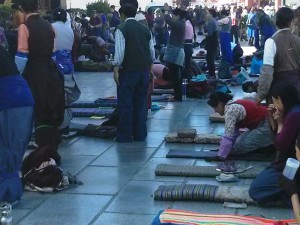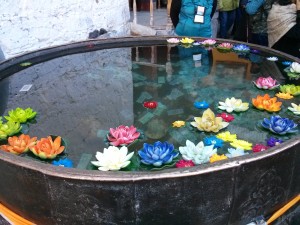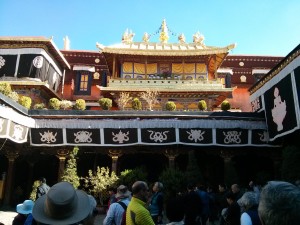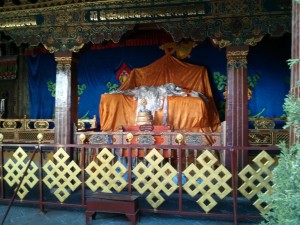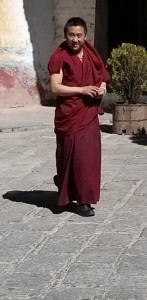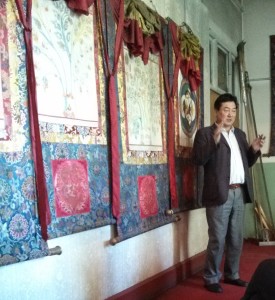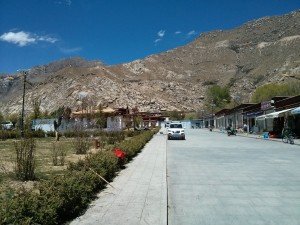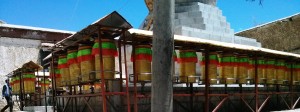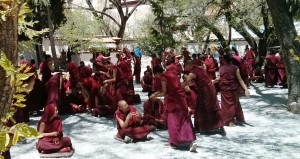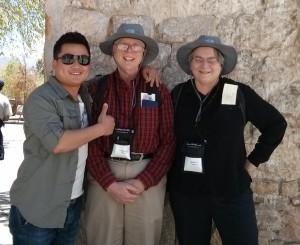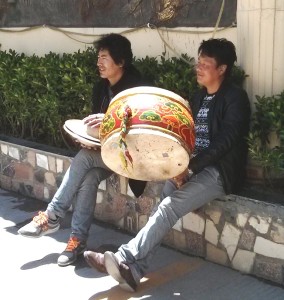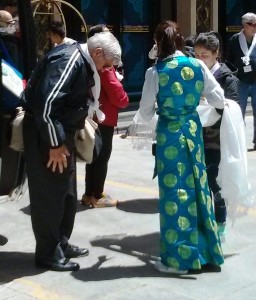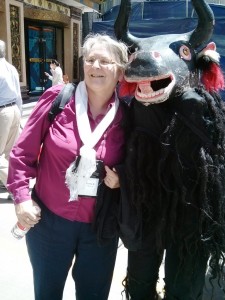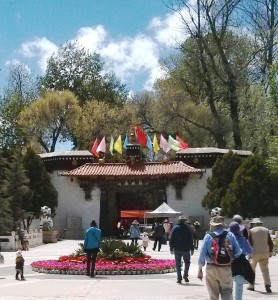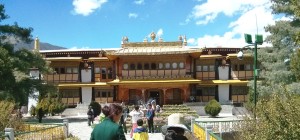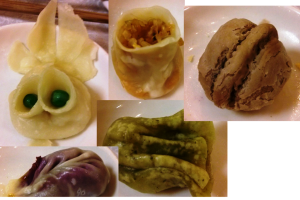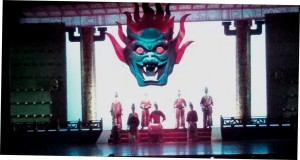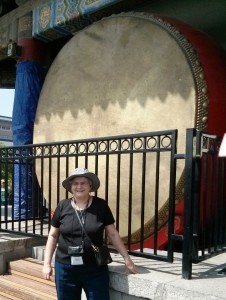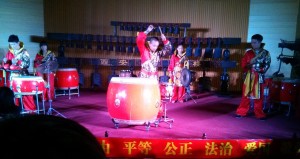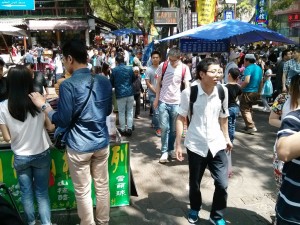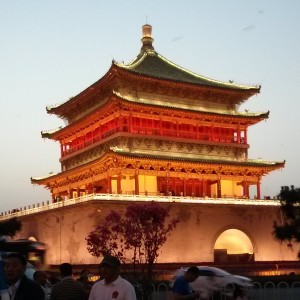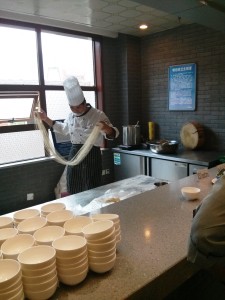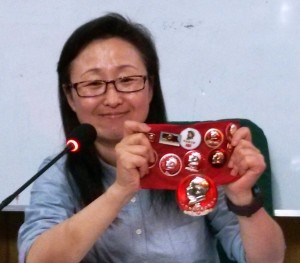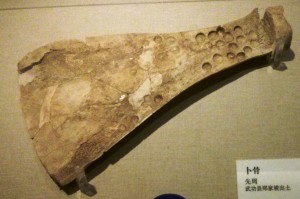There are pics today.
The breakfast today was not as good as yesterday’s bad breakfast. We didn’t get any butter for our bread — only jam. But at least we had warm water for the shower. (Not hot, but warm enough to use).
Our major activity was to drive out to a village to see how rural Tibetans live. We passed several other rural vilages (including the picturesque one show above) to a village an hour and a half from our hotel. Our family’s house had yaks, of course. Q: If a yak gets loose and blocks traffic, is that a “big yak attack”?
They also had cows, complete with Buddah decorations. (The cow in the back hads red ribbons on his ears.) When Tibetans eat “yak butter”, it’s almost always mostly cow butter with a little yak butter mixed in.
The village was quite hilly. Houses were packed close together and surrounded by walls. I couldn’t get a good picture of what a house looks like. Here’s a pic of the mini-courtyard outside the prayer room. Houses were surprisingly big. They were built of block and were very sturdy. The yards were full of junk, but the houses were clean and the windows well-fitted. If you look closely, you will see painted decoration that’s very typical of what I’ve seen all over Tibet. The drapes you see are cartoon Disney bed sheets.
Here you can see a small area of the courtyard. This is an arid area, so there’s not a lot they can do about the dust. They tend to throw a lot of what looks to me like junk in the yard. I don’t know whether it’s hard to dispose of larger trash or weather the family doesn’t think of it as junk.
We were offered Cheese Mo Mo (sp?) as a snack. It was quite tasty.
They offered butter tea (butter, salt, water, and a little black tea) and sweet tea (millet, sugar, hot water, and a little black tea) to drink. They traditionally drink butter tea in the morning and sweet tea after 11:00. As I mentioned above, there’s only a small amount of yak butter and a larger quantity of cow butter. This pic shows their courtyard tea maker. I felt the pot and it was quite hot. I saw a lot of these in Tibet. Given all the sun they get, it makes a lot of sense.
We were invited into their prayer room. This is always the largest room in the house. On special occasions, a Buddah monk is invited to stay with them. The monk will sleep on the floor in this room. The room is sometimes used for special guests (such as us, aparently.) Other than that, the room is not used. It’s just like the parlor in the old Baltimore row houses of two generations ago (except the priest never slept over). The room is decorated as a temple. It is the cleanest room in the house. These pictures show some of the things in the room. I won’t pretend to be able to explain them well.
If you go back to the courtyard shot, you will see a ladder leading to the roof. I went up this ladder and looked around. Here you can see the prayer flags and a mountain in the background. According to the lecture we got this afternoon, prayer flags should always have five colors. From top to bottom, they are blue (sky), white (clouds), yellow (earth), red (fire), and green (rivers and lakes). Those are the colors I always saw, but I saw that they aren’t always in the preferred order.
These people have no problems combining the religious with the secular. I saw pilgrims rotating their hand-held prayer wheels with one hand while talking on the cell phone with the other. We didn’t see any part of the inside of the house other than the prayer room. However, this family seems to be doing pretty well.
Just outside the house there was some kind of construction project going on. The women and old men were doing the work. The young men were out liviging with the livestock. This is a semi-nomadic society,. The villagers obviously believe in equality for the sexes. You can’t be sure from the picture I got, but the person mixing cement is a woman.
After visiting the house (we never got to talk with any of the adults in the village), we visited the school. This is a village primary school. The next level of children go to a centralized school. The children were outside eating lunch. The teacher is from this village and had just graduated from high school. He did not pass his university entrance exams and took this job while waiting to try the exams a second time. There are 10 children in the school.
We had a picnic lunch on the way home. Whe we got back to our hotel, we got a lecture about Tibet cultural history. The hotel did not have a projector, and the lecture was pretty dry. But the discussion afterwards was riviting. I learned a lot about Tibet.


